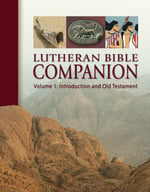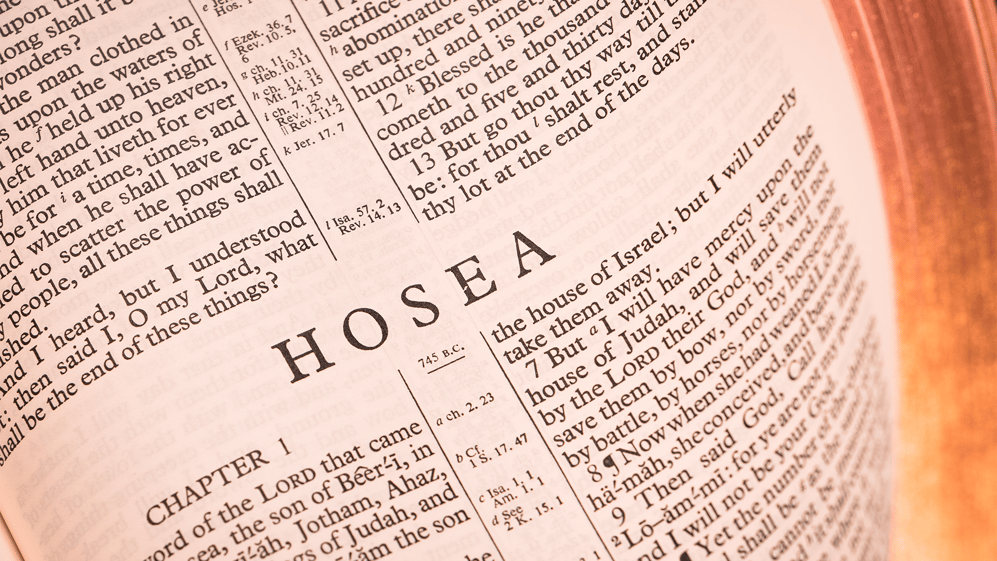The Lord and Israel are major characters in the Book of Hosea, but the drama of their relationship is acted out in the persons of Hosea and his unfaithful wife, Gomer. She bore him three children: two sons and a daughter. Hosea gave the children symbolic names that illustrated God’s attitude toward Israel’s present and future: Jezreel (“God sows” punishment), Lo-Ruhamah (“No Mercy”), and Lo-Ammi (“Not My People”). Read on to see what The Lutheran Bible Companion says about Hosea.
Is the account of Hosea's marriage literal or symbolic?
The character of Gomer causes the major debate surrounding the Book of Hosea. Interpreters wonder whether the account of the prophet’s marriage to an adulteress is literal, or symbolic (allegorical, parabolic, or visionary) of the country’s faithlessness to its “lord” or husband (cf Isaiah 54; Ezekiel 16, 23). Another aspect of the issue is whether or not Hosea knew of his wife’s character before he married her.
The old rule of interpretation that a text has “one literal sense” would tip the scales in favor of taking the story literally—and it, no doubt, does so for the majority of both liberal and conservative interpreters. (Usually a text gives indications if the author wants it wants to be understood in some non-literal fashion.) Among the defenders of a literal intent are Irenaeus, Theodore of Mopsuestia, Augustine, Luther, Laetsch, and probably a majority of modern interpreters. Defenders of an allegorical intent (many of whom one is surprised to find here) include the Targum, Jerome, most medieval commentators, Calvin, Gunkel, Gressmann, von Rad, Young, and many evangelicals. A sort of middle position (really more a subdivision of the allegorical understanding) defends the view that the prophet saw this “marriage” as a vision (Origen, Ibn Ezra, Kimchi, Hengstenberg, Keil, etc.). These examples show us that theology is not the deciding factor in people’s opinions.
God’s Relentless Love: A Study of Hosea
In this eight-lesson study, dive into the book of Hosea and gain a new perspective of the relentless love of God for His people.
Arguments for a Symbolic Understanding
The major argument for an allegorical, parabolic, or other “spiritual” understanding is that a righteous God would never command a prophet to marry such an unfaithful woman, especially in the light of Old Testament laws (Leviticus 19:29; Deuteronomy 23:17) that exclude prostitutes from the congregation of holy Israel and prescribe stoning for an adulteress. Similarly, then, the argument goes, how could such a prophet have an effective ministry, any more than a modern pastor would under such circumstances? And what kind of an example would that set for God’s people?
Weaknesses of a Symbolic Understanding
However, many of the prophets’ lives served as action prophecies, and Hosea fits readily into the pattern. Such behavior would highlight in the extreme a major theological point the Lord wanted to make through Hosea, namely, that God elected and continued to love a people who had not merited His love in the slightest (cf Deuteronomy 7:7; Ezekiel 16). Also, one of the major weaknesses of any allegorical approach is that there are no convincing symbolic meanings for the names of Gomer and Diblaim.
There is a certain undeniable attractiveness for the centrist view that Hosea was not aware of Gomer’s character at the time of their marriage. “Wife of whoredom” in Hosea 1:2a is then understood as Hosea’s own sad statement about what he learned later about his wife (2:2 is then often understood as containing an actual divorce formula after Gomer strayed from Hosea). But just as God planned to restore Israel after the “divorce” of the exile (cf Isaiah 50, 54), so Hosea later reclaimed his wife. Chastened and repentant, she no longer lusted after her former ways but was content to be faithful to her husband (“lord”).
Looking at the Whole
The first part of the book (chapters 1–3) certainly relates the story of Hosea’s
family as an illustration of God’s relationship to Israel. Gomer marries
Hosea and bears his children. He anticipates trouble for the children (1:2–9)
as well as a hopeful future (1:10–2:1). At some point, Gomer leaves Hosea.
Commentary follows with themes of trouble and hope (2:2–23) as in the
first chapter. Hosea redeems a woman and marries again. Apparently, the
woman is Gomer. The second marriage is presented as trouble (3:1–4), then as a promise (3:5). These weal and woe themes then manifest themselves
in God’s dealings with Israel throughout the oracles in the rest of the book
(4:1–5, 15a and 5:15b–6:3; 6:4–11:7 and 11:8–11; 13:12–13, 16 and 14:1–9).
Certainly Hosea and Gomer's relationship was more than symbolic, although it clearly illustrates God's relationship with Israel.
 Read more about Hosea, Gomer, and other Old Testament books in the Lutheran Bible Companion, Volume 1.
Read more about Hosea, Gomer, and other Old Testament books in the Lutheran Bible Companion, Volume 1.
Blog post adapted from Lutheran Bible Companion, Volume 1: Introduction and Old Testament, pages 856-857, copyright © 2014 Concordia Publishing House. All rights reserved.















